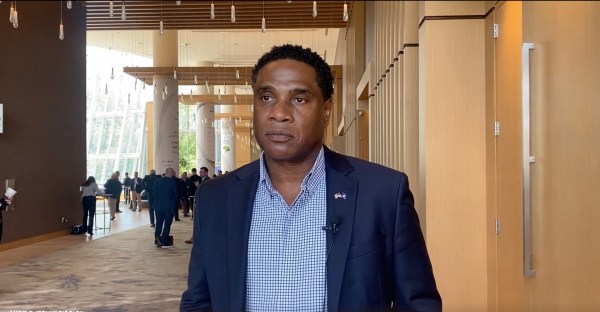New data center strategy moves Nebraska away from disaster recovery
A new initiative underway in Nebraska will turn the state’s disaster recovery data center into an active operating center that will help to improve the state’s IT operations.
When Chief Information Officer Ed Toner came on board as CIO nearly a year ago, he looked first at the state’s data center operations.
“We were really vulnerable,” Toner told StateScoop in a video interview at the National Association of State Chief Information Officers Midyear conference in Baltimore. “We had one data center. That was it. First, I wanted to shore up that. Then my team told me we have a disaster recovery site.”
Coming from private sector experience at companies including First Data and TD Ameritrade, Toner decided the state didn’t need a disaster recovery data center, but rather two centers located in separate areas that were duplicated in real time and could shift operations between the two flawlessly.
“I said, we’re not going to have DR,” Toner said. “[At First Data], the last real project I worked on, I had a group of architects who made everything active-active between our two data centers, so we didn’t have DR.”
Toner looked into that solution for the state and came across an efficient model that tapped into a company in Omaha — located about 50 miles from the capital city of Lincoln — that regularly works with public sector clients. Toner set up a contract to move the state’s disaster recovery data center operations into active operations in their data center.
“We have a reciprocating agreement where we put our servers there and we’re allow them to put their servers in Lincoln,” Toner said. “Right now, we’re not running active-active, but we’re active in Lincoln and on hot standby in Omaha.”
While this solution is similar to traditional disaster recovery, it is not specifically the same because everything that occurs in the Lincoln data center is reproduced in the Omaha center.
Within the next year, Toner said he will flip real-time operations to the Omaha data center, because it is a higher tier data center than the one in Lincoln. In addition, he’ll look to use the consolidated data infrastructure to round out the state’s big data strategy.
“I think that’s going to help because by bringing everything in, the data is all in there,” Toner said.
Contact the reporter who wrote this story at jake.williams@statescoop.com and follow him on Twitter @JakeWilliamsDC .
